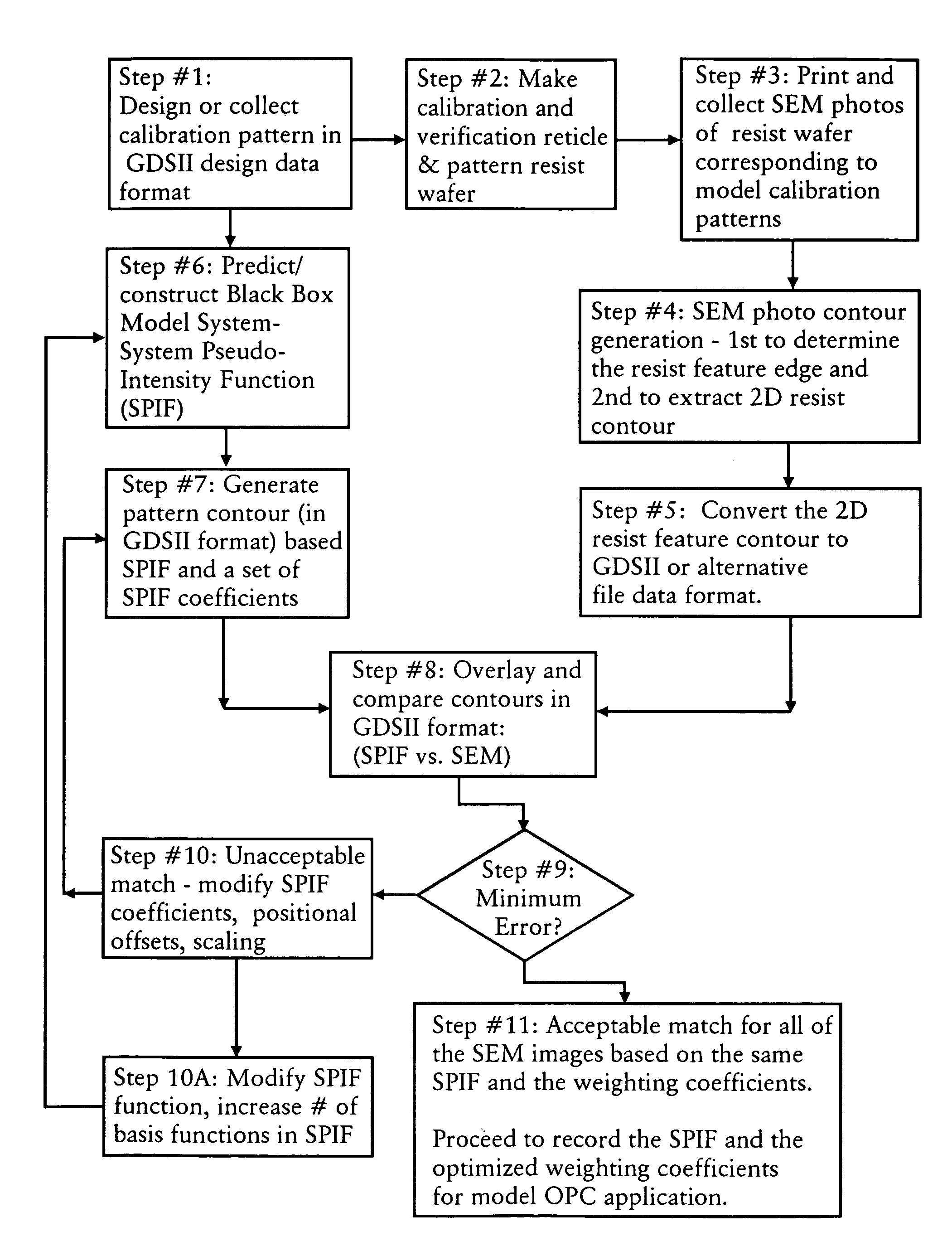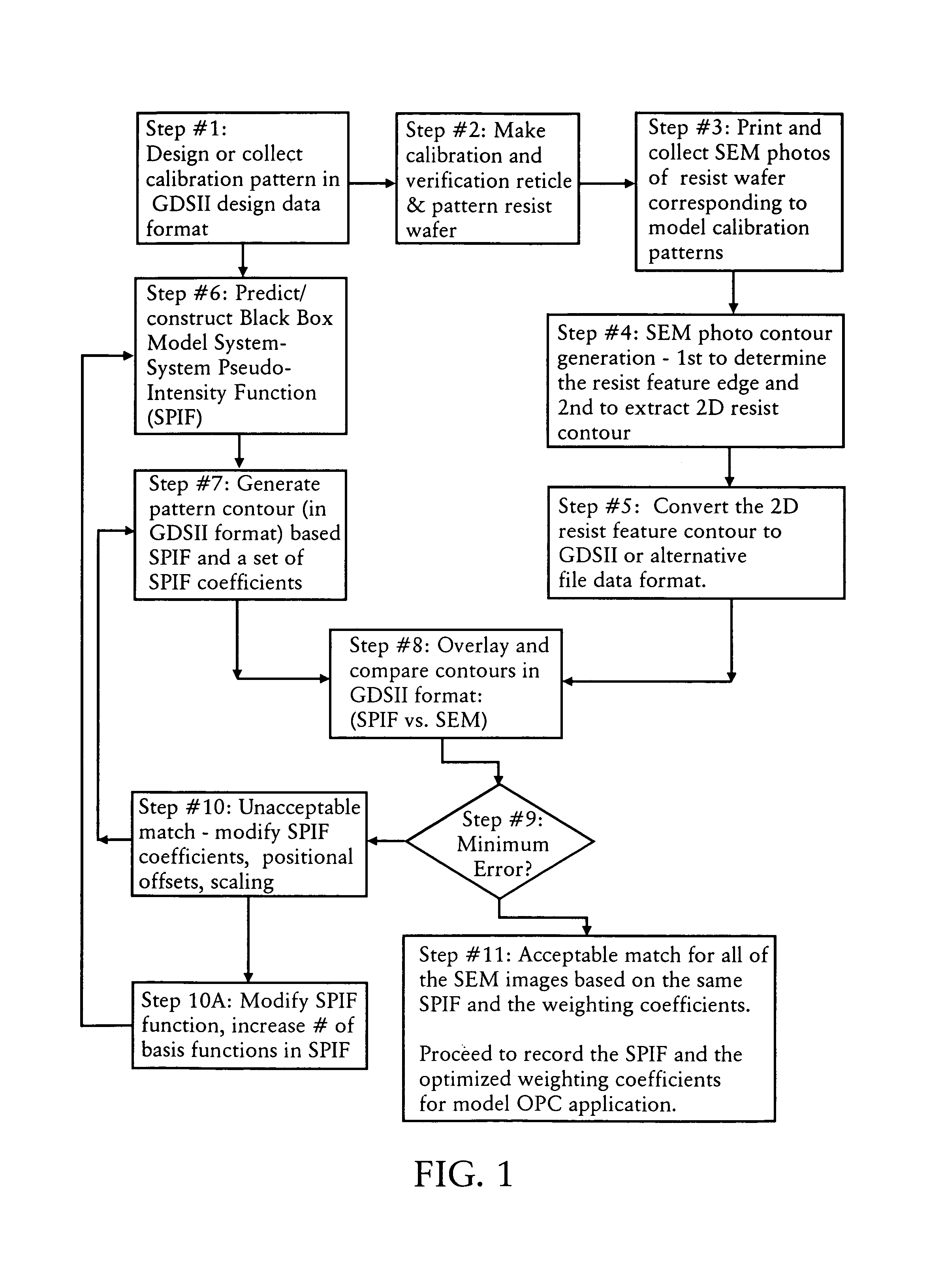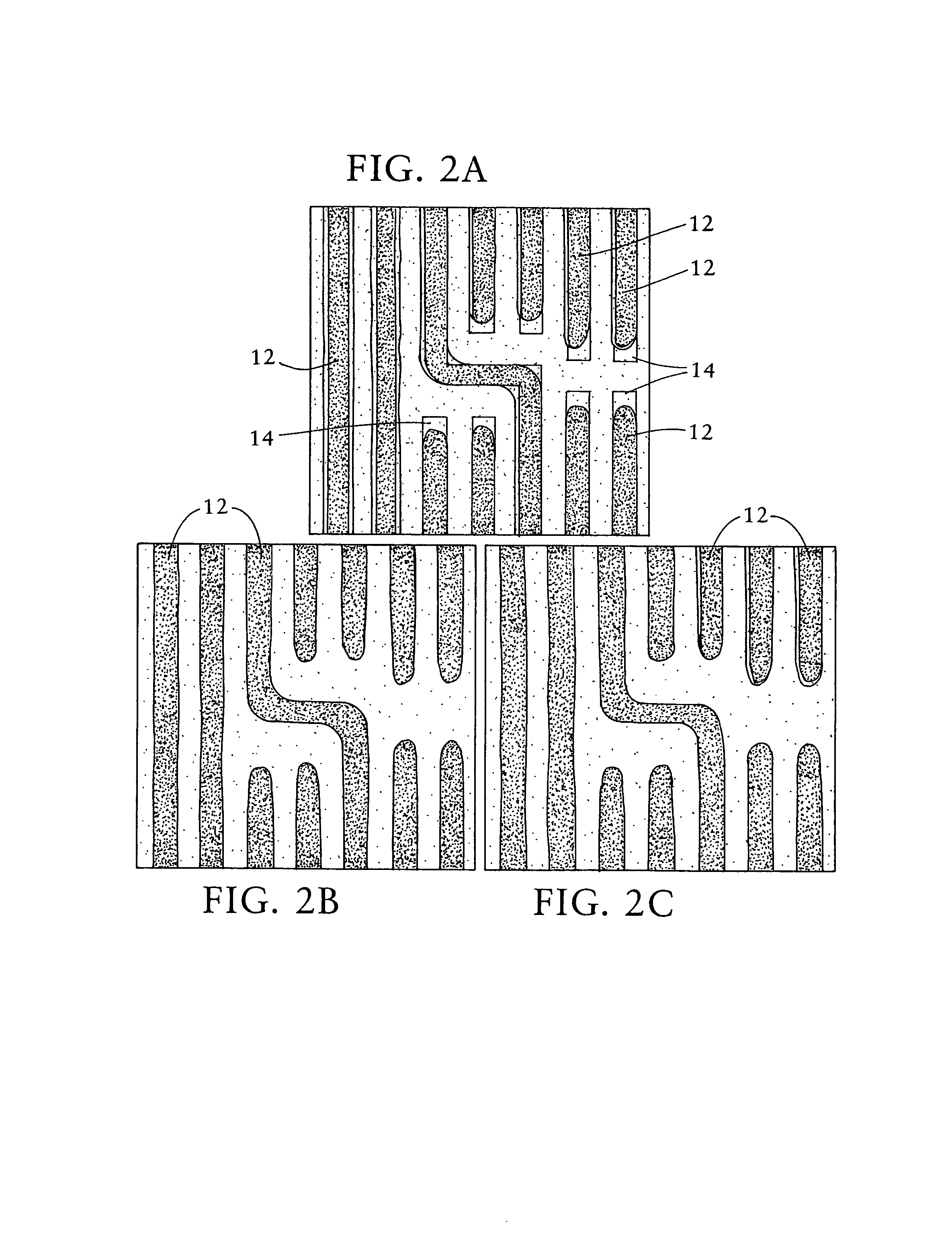Method of two dimensional feature model calibration and optimization
a feature model and optimization technology, applied in the field of photolithography, can solve the problems of reducing the size of the integrated circuit, reducing the resolution limit of the optical exposure tool, and becoming both a time-consuming and costly process, and achieving the effect of reducing the optical proximity
- Summary
- Abstract
- Description
- Claims
- Application Information
AI Technical Summary
Benefits of technology
Problems solved by technology
Method used
Image
Examples
Embodiment Construction
[0040]In accordance with the present invention, a method is disclosed for calibrating an imaging system by determining a set of performance parameters (i.e., calibration model) which define the printing performance of the given imaging system. The performance parameters are determined for multiple types of features that may be printed in a typical mask design (e.g., densely-spaced features, semi-isolated features, isolated features, line-ends, elbows, etc.). As explained in more detail below, the performance parameters are utilized to determine how a mask should be modified such that the desired feature is accurately printed on the wafer (i.e., the resulting resist pattern formed by the mask accurately corresponds to the desired feature).
[0041]Once the performance parameters (or calibrated model) have been determined for a sufficient number of features, the performance parameters are utilized to compensate for optical proximity errors occurring during photoresist printing (or after ...
PUM
 Login to View More
Login to View More Abstract
Description
Claims
Application Information
 Login to View More
Login to View More - R&D
- Intellectual Property
- Life Sciences
- Materials
- Tech Scout
- Unparalleled Data Quality
- Higher Quality Content
- 60% Fewer Hallucinations
Browse by: Latest US Patents, China's latest patents, Technical Efficacy Thesaurus, Application Domain, Technology Topic, Popular Technical Reports.
© 2025 PatSnap. All rights reserved.Legal|Privacy policy|Modern Slavery Act Transparency Statement|Sitemap|About US| Contact US: help@patsnap.com



